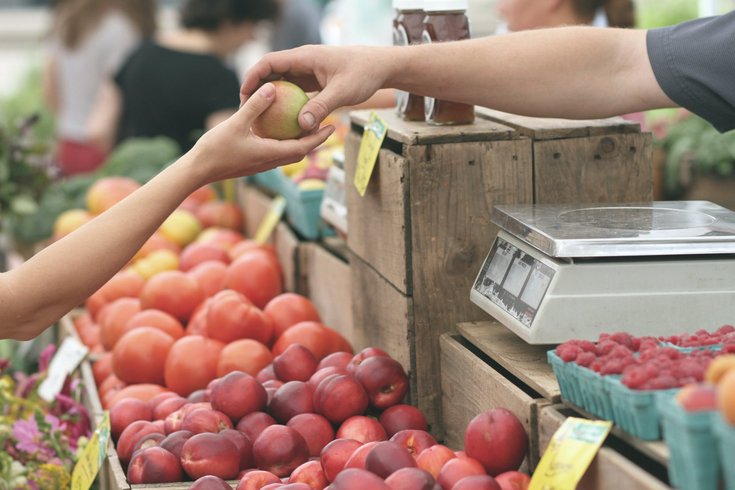
December 16, 2023
 Erik Scheel/Pexels.com
Erik Scheel/Pexels.com
Over the last year, Philadelphia and the rest of Pennsylvania have seen the steepest increases in grocery prices in the United States, a Consumer Affairs report found.
The cost of groceries increased more in Philadelphia than any other U.S. metro area over the last year, according to an analysis conducted by Consumer Affairs. Pennsylvania had the highest grocery price inflation of any state in the country, the report found.
Record-high inflation has affected multiple categories of consumer goods since the start of the COVID-19 pandemic. Grocery prices, like fuel costs, are especially volatile and tend to vary based on region. Since they're both essential and fluctuate a lot, economists track them separately from "core" inflation measures that give a more stable picture of prices for other combined goods and services.
The Consumer Affairs analysis examined U.S. grocery price data across 15 categories of goods at more than 150,000 stores. Nationwide, grocery prices rose 5.3% year-over-year — a significant improvement over the previous annual change. Going back two years, prices for the same group of goods have increased 25.5% in the U.S.
But shoppers in Philadelphia and the rest of Pennsylvania are still seeing considerable price hikes at the market. In the Philadelphia metro area, the price of the 15-category basket rose 7.1% over the last 12 months. In Pennsylvania as a whole, it increased by 8.2%.
The analysis found that a family of four spending $9,000 per year on groceries in the Philly area is now paying about $645 more annually than a year ago. Statewide, a family of four that spends an average of $750 a month on groceries now pays an extra $61.50 a month compared to a year ago, the report found.
Prices for some categories of goods are rising faster than others. In the Philly area, the report found grains, beans and pasta are up 3.7% over a year ago. The cost of pre-made meals sold at grocery stores has risen 5.1%.
The price hikes are especially stark compared to parts of the U.S. that have been relatively insulated from the rising costs. In Colorado, where year-over-year grocery costs climbed a nation-lowest 2.9%, the same family of four that spends an average of $750 monthly on groceries is only paying an extra $21.75 a month. Compared to the average Pennsylvania family, that's an annual difference of $477 per year.
Some cities like Richmond, Virginia — despite only being 250 miles south of Philly — saw only modest growth in the cost of groceries. Year-over-year, Richmond's increase in the 15-category basket was only 2.3%. Metro areas that have had the highest increases behind Philly are Albany (7.2%), Syracuse (7.1%), Baltimore (7%) and Boston (6.7%).
Behind Pennsylvania, Vermont (7%), Maryland (7%), West Virginia (6.9%) and New Jersey (6.8%) have had the steepest increases in grocery prices in the last year. Arizona (3.3%), North Carolina (3.5%), Michigan (3.5%) and Virginia (3.6%) landed behind Colorado for the smallest price increases across the 15 categories of goods.
Some of the discrepancies from place to place can be explained by varying supply chain costs and overhead, but basic laws of supply and demand also play a part. For example, rural areas typically face steeper price hikes because their grocery stores often get goods from wholesalers rather than directly from manufacturers, which adds to supply chain and transportation costs that get passed on to consumers.
“In general, food prices tend to be higher in the Northeast and the West,” George Davis, a professor of agriculture and applied economics at Virginia Tech, told Consumer Affairs. “The basic reason is more population density and incomes.”
Still, areas that haver lower average incomes also may face higher grocery prices because they struggle to draw investments in new stores. Having more grocery stores in a given area can help contain prices, since competing chains monitor each other's prices and will try to attract customers by offering different kinds of promotions.
Food manufacturers have come under fire in recent years for "greedflation" and "shrinkflation," the related trends of marked-up groceries and reduced value for customers. Many food producers have continued to raise prices and reduce the size and contents of their packaging despite seeing declines in their input costs since the peak of the pandemic,
Earlier this week, U.S. Sen. Bob Casey released a report outlining the effects of shrinkflation on household consumer goods.
“Corporations are only getting more creative as they rake in record profits at the expense of Pennsylvania families: shrinking the size of their products while keeping the same sticker price," Casey said. "This corporate greed is one of the reasons that Americans are frustrated by expensive grocery bills."
Casey sent letters to the trade associations behind the biggest producers of food, beverages and other consumer products to demand answers about their practices. Casey said these companies have been price-gouging consumers and that more needs to be done to promote competition that lowers prices.
“My new report not only exposes them for their greed but outlines the steps we need to take to combat it and put more money back into the pockets of working families," Casey said.